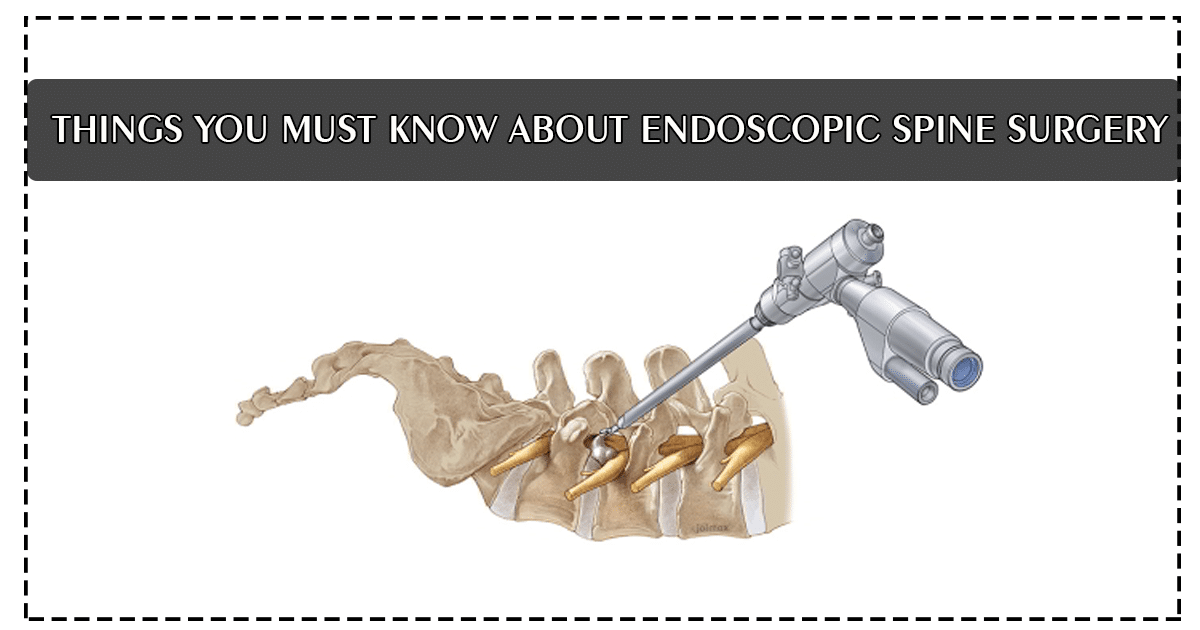Things You Must Know About Endoscopic Spine Surgery

The ever-rising health issues have led to an increase in medical treatments. There have been consistent innovations in medical science that have led to the discovery of advanced medical treatments for various ailments. One such medical procedure that has come to light these days is Endoscopic Spine Surgery.
What is Endoscopic Spine Surgery?
Endoscopic spine surgery is a modern form of surgery of the spine. This surgery makes use of modern surgical tools and equipment. The traditional spine surgery which was also known as open spine surgery or open back surgery involved drawing a big cut at the back of the patient for helping the surgeon reach to spine for correcting the problem. However, endoscopic surgery involves drawing a small incision at the back and inserting a small surgical instrument. The surgeon is able to locate the spinal problem such as disc herniation or bone spur quite easily with the help of an endoscope and x-ray guidance.
To learn more about this type of spine surgery visit allspinesurgerycenter.com.
Who qualifies for an Endoscopic Spine Surgery?
- The patients suffering from disc herniations, spinal stenosis, failed back surgery and numerous other spinal conditions are benefitted with Endoscopic Spine Surgery. It is safe and very effective for these spinal conditions.
- To find out whether a patient qualifies for Endoscopic Spine Surgery, his spinal condition needs to be evaluated. The evaluation is done through physical examination or imaging tests such as MRI in cases of acute pain. After the evaluation, a clear picture of the type of spinal surgery and its requirement can be ascertained.
- People suffering from spine instability such as spondylolisthesis cannot be treated through Endoscopic Spine Surgery.
- Similarly, Endoscopic Spine Surgery is not yet feasible for surgical procedures that involve spinal fusion and fixation.
Types of endoscopic spine surgery
- Endoscopic Discectomy: it is used to treat the pain of the lower back and legs (lumbar), mid-back (thoracic), or neck and arms (cervical). This is done by removing the herniated disc material.
- Endoscopic Foraminotomy: this is ideal for treating both cervical and lumbar areas of the spine. This is performed for making more space for narrowed nerves to move freely without compression.
- Endoscopic Facet Rhizotomy: this surgical procedure is performed to make the nerves causing chronic back pain and neck pain dead. It is done to treat failed back surgery syndrome, facet joint arthritis, and facet joint injuries.
- Endoscopic Laminotomy: this surgery is performed on those patients who are suffering from spinal stenosis.
Benefits
Endoscopic spine surgery has several pros such as:
- Minimal blood loss
- Better quality of life
- Preserving spine mobility
- Quick recovery
- Removing of no muscle or bone
- High rates of success
- Same-day surgery
- Microscopic incision
Overall, endoscopic spine surgery is a boon for those suffering from spinal issues as it does not involve major surgery and there are no major cuts that are drawn to the back of the patient. However, its practicability and suitability are not yet tested and developed for all spinal issues thereby limiting its scope.
